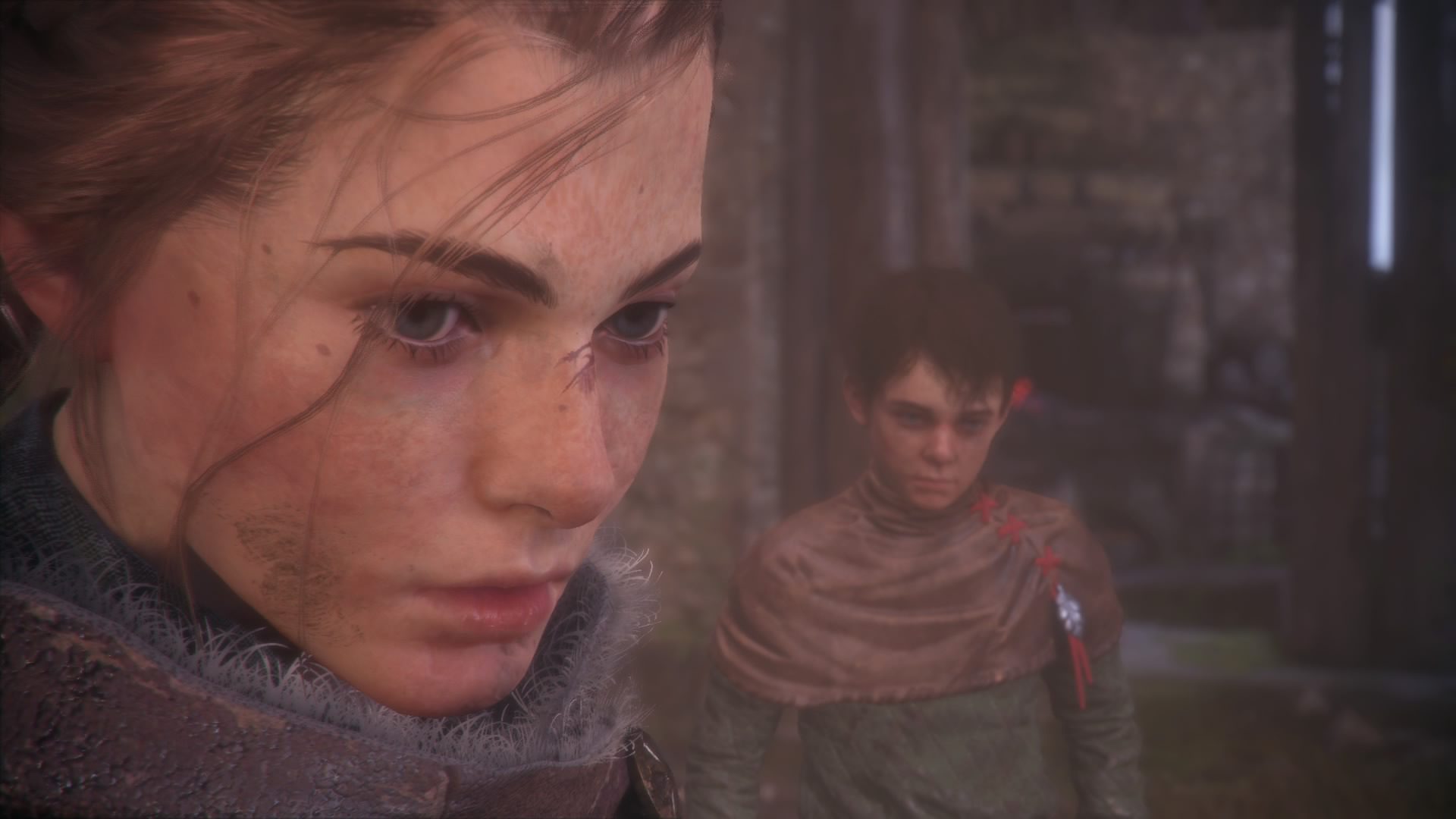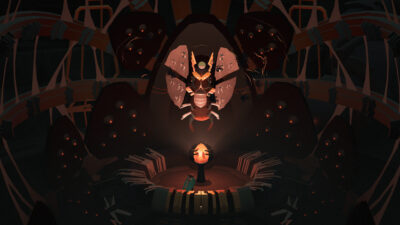
The walls are alive with the sound of rodents in the rat-infested adventure, A Plague Tale: Innocence. Here’s our review…
One of the most remarkable things you can find in A Plague Tale is a flower. When you do, it’s nothing more than an optional collectable, but in a world full of despair, each bloom amongst the mud and corpses feels important. A speck of beauty in the heart of unrelenting ugliness. It’s a theme that runs throughout Asobo’s game.
Its visual representation of 14th-century France is a picture of decay, yet also consistently evocative. Abandoned villages feel like they were once full of life. A haunting mist floats over a battlefield as you pick your way through piles of bodies. The light of the full moon shines over an old ruin. Even when the sights are repulsive, there’s an attractive quality in the detail.
Then there’s that ‘innocence’, embodied in the game’s young protagonists, Amicia and Hugo. The pair are forced to flee the comfort of their family estate when the dreaded Inquisition comes knocking, and it falls to Amicia, the older sibling, to protect her sick brother and find refuge.
These characters, especially Hugo, have been sheltered from the grim realities of the outside world, and their sense of wonder, fear, and excitement is palpable. As you acquaint yourself with the rules, so do they, bouncing dialogue back and forth about what they see and what they should do.
Most of the time what they need to do is solve environmental puzzles and avoid capture. It’s mostly familiar stuff. There are boxes to push and levers to pull, Hugo can squeeze through small spaces, and Amicia’s slingshot can break locks from distance.
When dealing with enemies, the focus is on stealth, with low walls and long grass providing cover, and rocks to throw to create distractions. As you go on, the slingshot becomes essential here too, not least allowing you to outright kill guards with clinical headshots.
But not all enemies are human, and soon you have to face the cause of the plague: rats. These are no ordinary rodents but a possessed mass that bursts forth from floors and walls, carpeting the ground in teeming, squeaking swarms, devouring anything in their path. Fortunately, they’re afraid of light, so you’re safe as long as you stay near a flame.
Navigating rat-infested areas thus becomes another kind of puzzle, as you figure out how to move around them or move them around. Often it’s a case of manipulating light sources. Sometimes you need some fresh meat.
Whatever you find yourself doing, it’s usually quite straightforward. You never have to think too hard or do too much to reach the next checkpoint, and any tools you need will be close to hand. Also, while you sometimes get to poke around and explore areas, actual progress is strictly linear.
Every scene is carefully contrived to set up that one path for you to advance. Enemies are predictable and limited, artificial borders keep you from wandering off track, torches last just long enough to reach a safe area, and so on.
It can feel overly mechanical and prescriptive at times, but this approach has its advantages. For one, it allows the game to maintain its dramatic pacing, as it switches between downtime, taut stealth, and panicked escapes.
Some sequences take a few attempts, but A Plague Tale is mostly interested in building momentum. And it works, with each episode providing a gripping narrative arc and unique situations. As you progress, you’re joined by other characters with their own helpful abilities, and you learn to craft different types of ammo.
Every section focuses on a new skill in a new context, until you have an extensive repertoire to exploit. First, you’re making noises with rocks and pots, then you’re lighting torches to clear rats. Next, you’re dousing the torches to turn the rats on the guards. Finally, you’re using all these tricks and more in increasingly creative ways.
At times, it doesn’t flow as smoothly as it might. Controls can be fiddly and movement imprecise, and occasional AI quirks can lead to abrupt deaths. It’s also irritating when checkpoints, as frequent as they are, aren’t updated after you’ve looted a secret area. Even so, A Plague Tale seems aware of its limitations and tries to work within them.
It doesn’t expect lightning reactions, keeps the rules of stealth simple, and offers a generous auto-aim feature. It certainly gets more testing towards the end – switching between ammo types under pressure can get awkward, and one late-stage ability is rather erratic – but never feels unnecessarily punishing.
So, despite its rigidity and lack of polish in some respects, A Plague Tale is a successful narrative-led adventure. It shines as a personal story, with Amicia, Hugo, and the gang providing highly sympathetic characters whose relationships feel honest and believable. It’s also an effective portrayal of a society stricken by war, poverty, and religious zealotry, heightened by the symbolic contrast between the rats and the children.
One question, perhaps, is whether the themes gel with the amount of killing you end up doing. But even here there’s enough context to suggest some ambiguity. After all, if there’s beauty in ugliness, why not something dark in the heart of innocence?
Highlight
Occasionally you’re faced with a larger puzzle that requires coordination between multiple team members, with Amicia directing each character to do their part. It’s here that the camaraderie develops, as the group exchange good-humoured banter and spur each other on. When you finally succeed, you really feel you’ve achieved something together.
Verdict: 75%
Simple structures are elevated by great art design and characters. A tale well told.
Info
Genre: Action / Adventure
Format: PS4 (tested) / XBO / PC
Developer: Asobo
Publisher: Focus Home Interactive
Price: £44.99
Release: Out now





